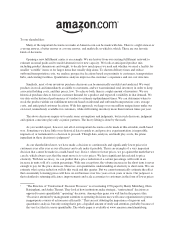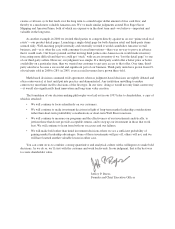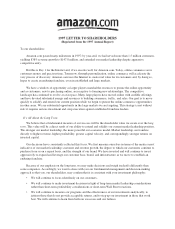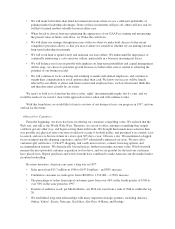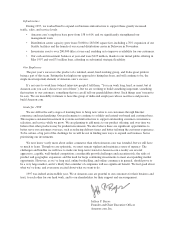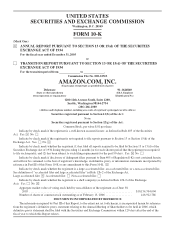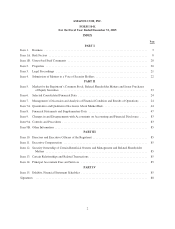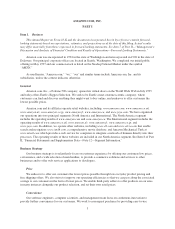Amazon.com 2005 Annual Report Download - page 4
Download and view the complete annual report
Please find page 4 of the 2005 Amazon.com annual report below. You can navigate through the pages in the report by either clicking on the pages listed below, or by using the keyword search tool below to find specific information within the annual report.
creates a virtuous cycle that leads over the long term to a much larger dollar amount of free cash flow, and
thereby to a much more valuable Amazon.com. We’ve made similar judgments around Free Super Saver
Shipping and Amazon Prime, both of which are expensive in the short term and—we believe—important and
valuable in the long term.
As another example, in 2000 we invited third parties to compete directly against us on our “prime retail real
estate”—our product detail pages. Launching a single detail page for both Amazon retail and third-party items
seemed risky. Well-meaning people internally and externally worried it would cannibalize Amazon’s retail
business, and—as is often the case with consumer-focused innovations—there was no way to prove in advance
that it would work. Our buyers pointed out that inviting third parties onto Amazon.com would make inventory
forecasting more difficult and that we could get “stuck” with excess inventory if we “lost the detail page” to one
of our third-party sellers. However, our judgment was simple. If a third party could offer a better price or better
availability on a particular item, then we wanted our customer to get easy access to that offer. Over time, third-
party sales have become a successful and significant part of our business. Third-party units have grown from 6%
of total units sold in 2000 to 28% in 2005, even as retail revenues have grown three-fold.
Math-based decisions command wide agreement, whereas judgment-based decisions are rightly debated and
often controversial, at least until put into practice and demonstrated. Any institution unwilling to endure
controversy must limit itself to decisions of the first type. In our view, doing so would not only limit controversy
—it would also significantly limit innovation and long-term value creation.
The foundation of our decision-making philosophy was laid out in our 1997 letter to shareholders, a copy of
which is attached:
• We will continue to focus relentlessly on our customers.
• We will continue to make investment decisions in light of long-term market leadership considerations
rather than short-term profitability considerations or short-term Wall Street reactions.
• We will continue to measure our programs and the effectiveness of our investments analytically, to
jettison those that do not provide acceptable returns, and to step up our investment in those that work
best. We will continue to learn from both our successes and our failures.
• We will make bold rather than timid investment decisions where we see a sufficient probability of
gaining market leadership advantages. Some of these investments will pay off, others will not, and we
will have learned another valuable lesson in either case.
You can count on us to combine a strong quantitative and analytical culture with a willingness to make bold
decisions. As we do so, we’ll start with the customer and work backwards. In our judgment, that is the best way
to create shareholder value.
Jeffrey P. Bezos
Founder and Chief Executive Officer



